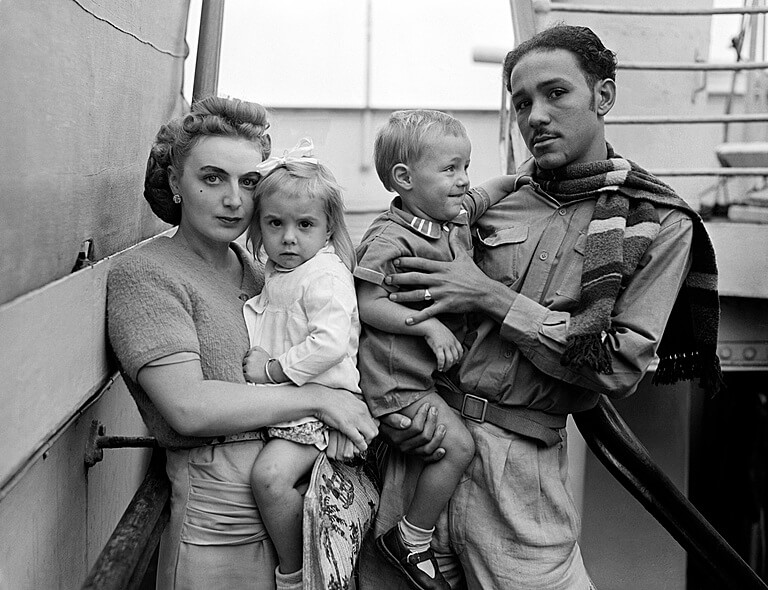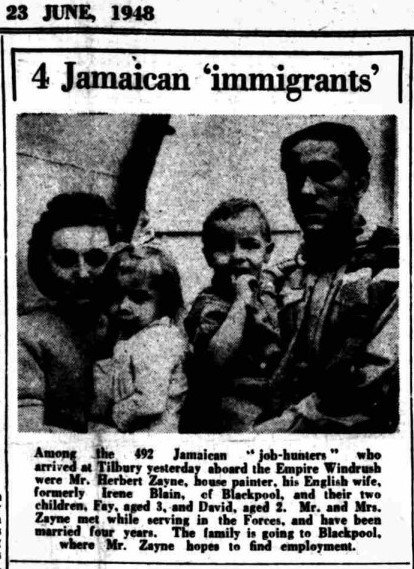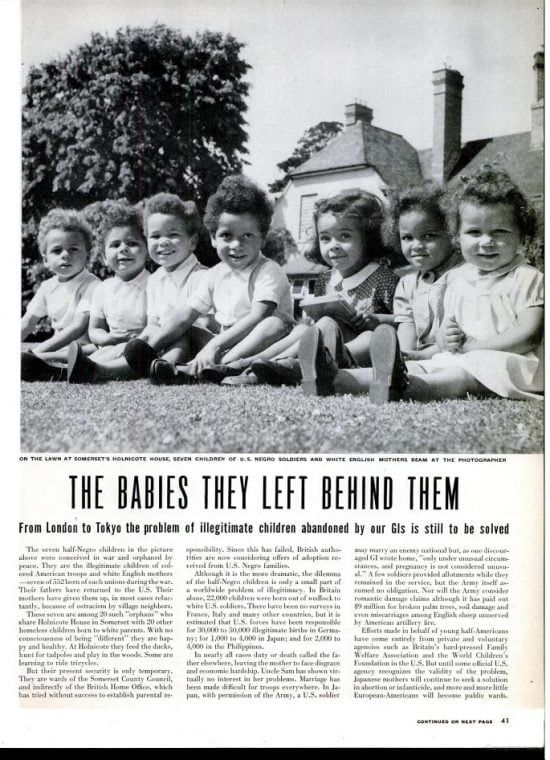Marking Windrush 75
On the 75th anniversary of Windrush Day, find out about the cultural impact of the Caribbean migration to Britain, the lesser known mixed families on board the ship – and the ongoing injustice faced by the Windrush generation.

The Empire Windrush was a passenger liner built in Germany in 1930. The ship was originally named the Monte Rosa and was used to transport passengers and goods between Germany and South America. Later, it was requisitioned by the Nazis who used it to transport troops during the invasion of Norway. During World War Two, the ship was seized by the British government and used as a troopship. After the war, she was returned to Germany and then sold to a Swedish shipping company.
In 1948, the British government chartered the Empire Windrush to transport workers from the Caribbean to the UK. The ship left Jamaica on 24 May 1948, and arrived in Tilbury, Essex, on 22 June 1948. The voyage took 28 days and covered a distance of over 8,000 miles, including stops in Jamaica, Mexico, Cuba and Bermuda.
The British Nationality Act 1948 gave the status of citizenship of the United Kingdom and Colonies (CUKC status) to all British subjects connected with the United Kingdom (UK) or a British colony. Empire Windrush brought one of the first large groups of postwar Caribbean immigrants to the UK. There were 1,027 passengers on board, as well as two stowaways who joined in Jamaica. Of these passengers, 802 gave their last country of residence as in the Caribbean: of these, 693 intended to settle in the UK.
We discussed the Windrush in our By The Cut of Their Cloth exhibition, where we explored a little known report held in Brent Archives entitled ‘The West Indian Comes to Willesden’.
Ethnic and racial diversity on Windrush
The passengers on board the Empire Windrush were mostly Jamaican, but there were also people from other Caribbean countries, including Trinidad and Tobago, Barbados, and Bermuda. The passengers were mostly young men who were seeking work in the UK. They were recruited by the British government to help rebuild the country after the devastation of World War Two.
The significance of the ship in shaping the cultural landscape of the UK is well known. What is perhaps less familiar is the racial diversity on board.
There were also white passengers on the Windrush, including crew members and Polish refugees as well as white British women who had married Caribbean servicemen during WW2. As we first learnt thanks to Kevin Searle's work, the Zaynes (pictured above) were one such mixed race family: Herbert Zayne, a Jamaican who had served in the RAF, was returning to Britain on the Windrush with his white English wife Doreen - mistakenly named Irene in many of the newspapers - and their two young children, Vanessa and David.

Doreen (neé Blaine), had lived in Blackpool before leaving for Jamaica with her husband 18 months previously. A 1948 article in the Birmingham Mail entitled ‘They Met At Elmdon…’ detailing their return to Britain aboard the Windrush is ostensibly a ‘feel-good story’ but, as Searle has pointed out, ‘arguably invites a voyeuristic assumption about what happened in the period between their meeting [at Elmdon airport] and the photograph of the couple with their two children’, as well as being loaded with insinuations about the ‘job-seekers’ of the Windrush of whom Herbert was one.
Insinuating the novelty and more of the mixed race couple, the Birmingham Post article feeds into what Minelle Mahtani has dubbed 'mixed race amnesia': a strategic forgetting of the longstanding and complex history of migration and racial mixing. At the time of the Zaynes' arrival, the 'brown babies' - the children born to Black GIs and white British women - was also increasingly in the public eye (see Life article below). Meanwhile, the 'brown babies' discussion had surplanted the moral panic over mixed race couples and children in interwar port cities.
The HistoryCal team have covered the story of the Zaynes in wonderful details, alongside an account of the Johnsons, another mixed race Windrush family.

A painful legacy
Like many other organisations working to share Britain’s Black history, our celebration of the 75th anniversary of the arrival of Empire Windrush is dampened by the appalling treatment of the ‘Windrush generation’. Targeted in the Conservative Government’s ‘hostile environment’ drive, many Caribbean men and women have been deported to countries they had not lived in since they were children; 24 of those died before the government could contact them to apologise for its mistake. Other examples of mistreatment continue to come to light.
Chamion Caballero, Director of The Mixed Museum, says: “The history in our archives puts the appalling mistreatment of the Windrush generation into a wider and longstanding context of betrayals of incomers by the British state in the twentieth century – including the deportations facing Black and Asian workers after World War One and the sudden forced removal of Chinese merchant seamen in Liverpool after World War Two.”
The museum would love to be able to explore the topic of mixed Windrush generation families further. If you’d like to partner with or sponsor us to do so, please get in touch.
Learn more
Visit The Windrush Museum
Find out about the mixed families on board the Empire Windrush, Historycal Roots
Read recent findings on how hundreds of Windrush generation with chronic and mental illness were sent back to the Caribbean, BBC News
